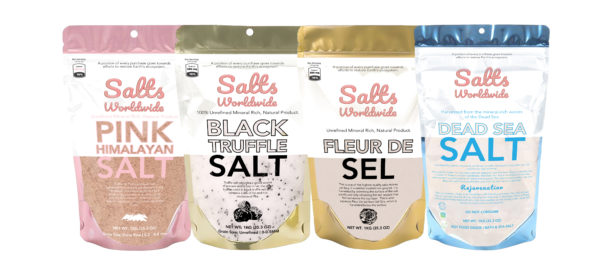Why Himalayan Pink Salt Is Better Than Sea Salt?
Salts Worldwide (SW) is an international producer of blue sea salt and Himalayan pink salt. These salts are pure, natural and exceptional and come in one or more concentrations.
However, salted sea water is not the only source of pure Himalayan pink salt, but it is a crucial component. Himalayan pink salt crystals must be salt water pure and wholesome, filtered to remove contaminants, ionized to distribute free ions and demineralized, to allow the salt crystals to settle. This can be done by other methods, such as solid-liquid ion exchange, but in general, the most reliable method is as described above.
Another key difference between blue sea salt and green sea salt is the presence of trace elements and minerals that are not found in seawater. In addition, there are certain chemical properties that distinguish salt from sea water.
The key difference between sea salt and ocean water is in their molecular weight, which is the number of molecules that make up the salt. For example, salt is known as the purity salt, because the majority of the chemical elements that make up the salt, or the chaos salt, are dissolved in it. Consequently, the molecular weight is very low.
Sea salt has a higher molecular weight, because it is more diluted than ocean water. An essential factor in determining the purity of sea salt is its location. Salt, which comes from the ocean is pure because it has been naturally distributed. Salt, which is contained in commercial matters and that is used for industrial purposes is not pure because the majority of the chemicals, impurities and minerals have been removed from the salt.
But even though sea salt is the more popular type of salt, it is still not a substitute for Himalayan pink salt. Himalayan pink salt has more minerals are less soluble in water than sea salt, so it does not evaporate as easily. Sea salt and Himalayan pink salt are just different forms of sea salt.
Sea salt has an added advantage of being cheaper than Himalayan pink salt. This is because of the slight differences in price in the two materials. Unlike Himalayan pink salt, sea salt is not commonly used as a table salt because of its lack of nutritional value.
Sea salt, however, is easy to use. Once bought, a sea salt capsule can be mixed with hot water and sprinkled on food and even added to drinks. When the sea salt is exposed to the air, it will absorb the necessary moisture and thus create a more authentic taste in the food.
Sea salt also dissolves better than the Himalayan pink salt. This has also an advantage of being less expensive. Sea salt is known for having a more realistic taste when compared to Himalayan pink salt.
The main difference between sea salt and Himalayan pink salt is that sea salt is usually more expensive than Himalayan pink salt, because the volume of salt used per liter of sea water is higher. There are various other important differences between the two such as the ability to dissolve under varying temperatures, the addition of different minerals and organic additives, the availability of additional salts and minerals, and the chance for contamination.
Himalayan pink salt is slightly more expensive than sea salt because it has a higher concentration of impurities, such as chlorine, which helps keep it pure. Salt is a very practical choice for anyone looking for quality, especially those who are using it for cooking. the preparation of food.



